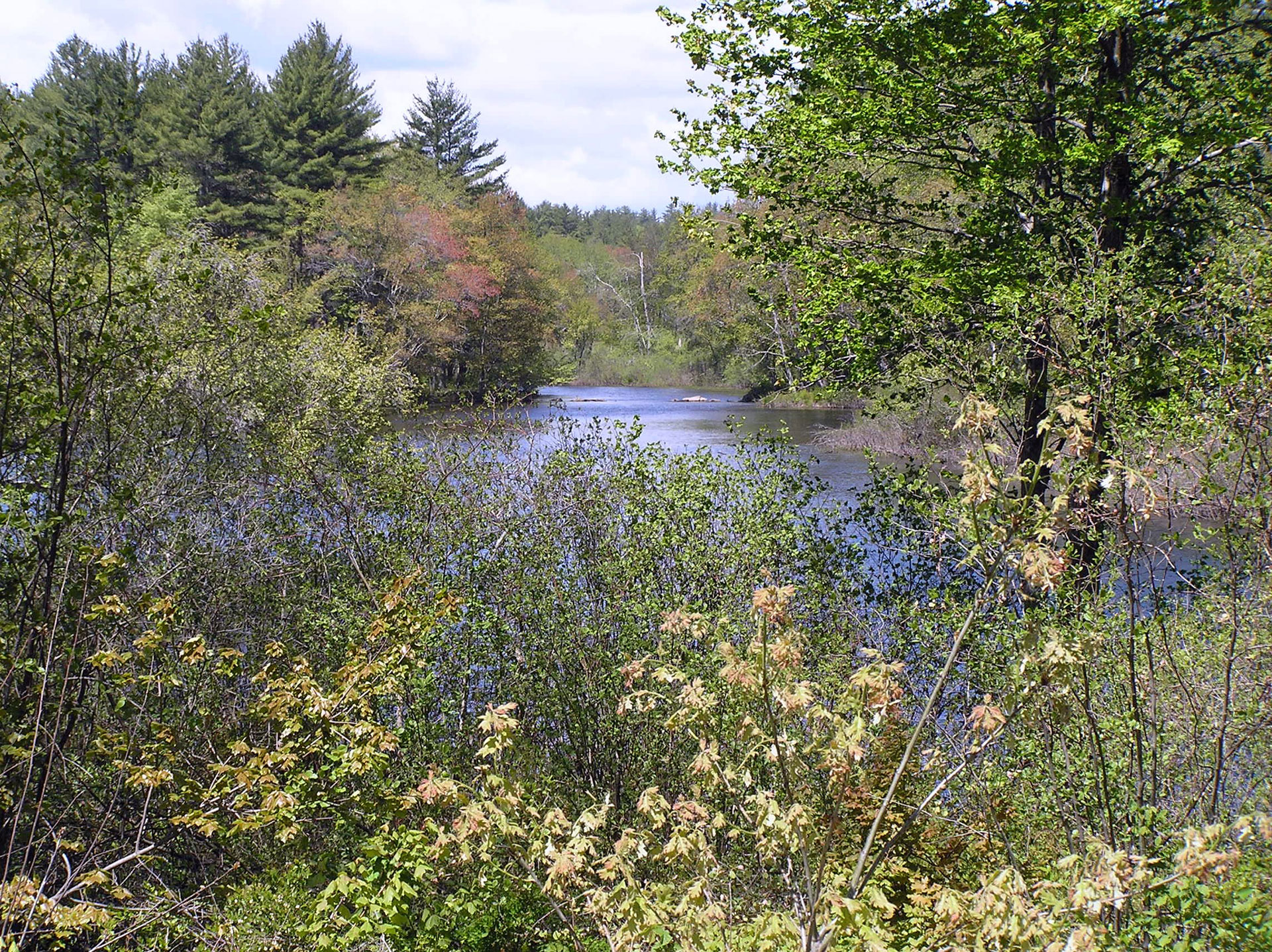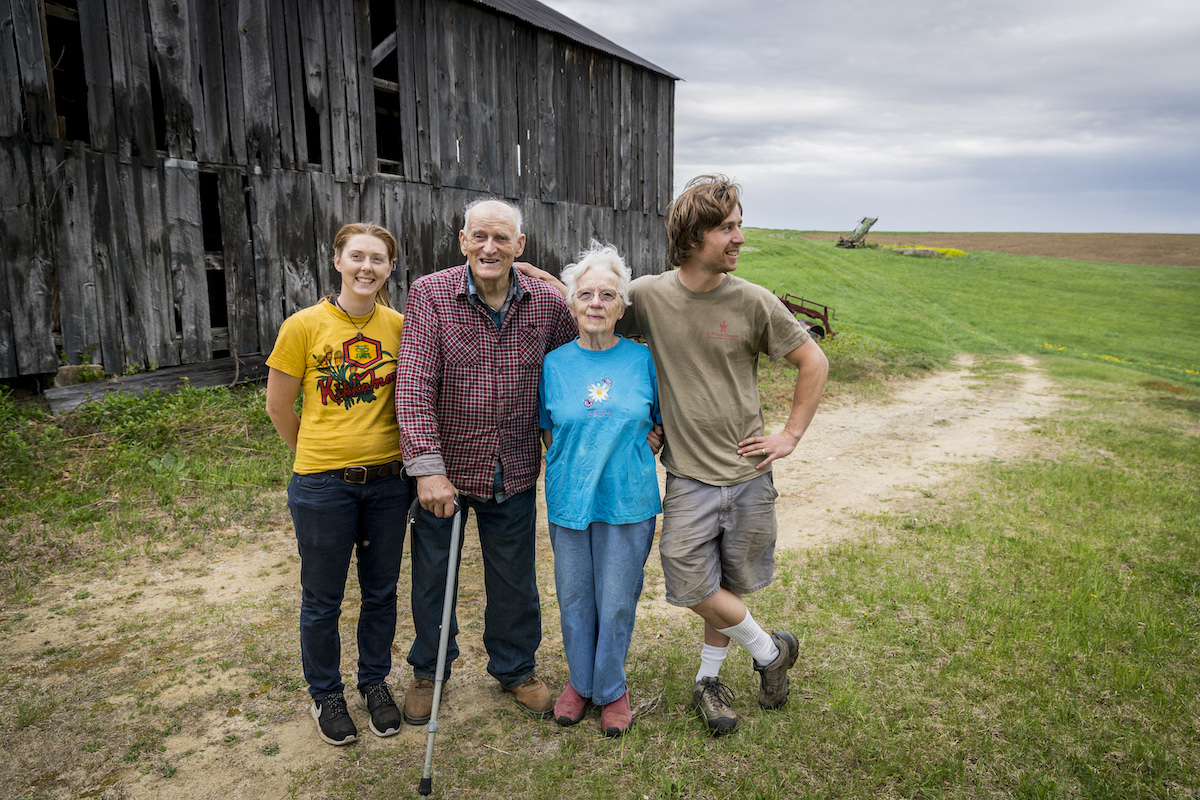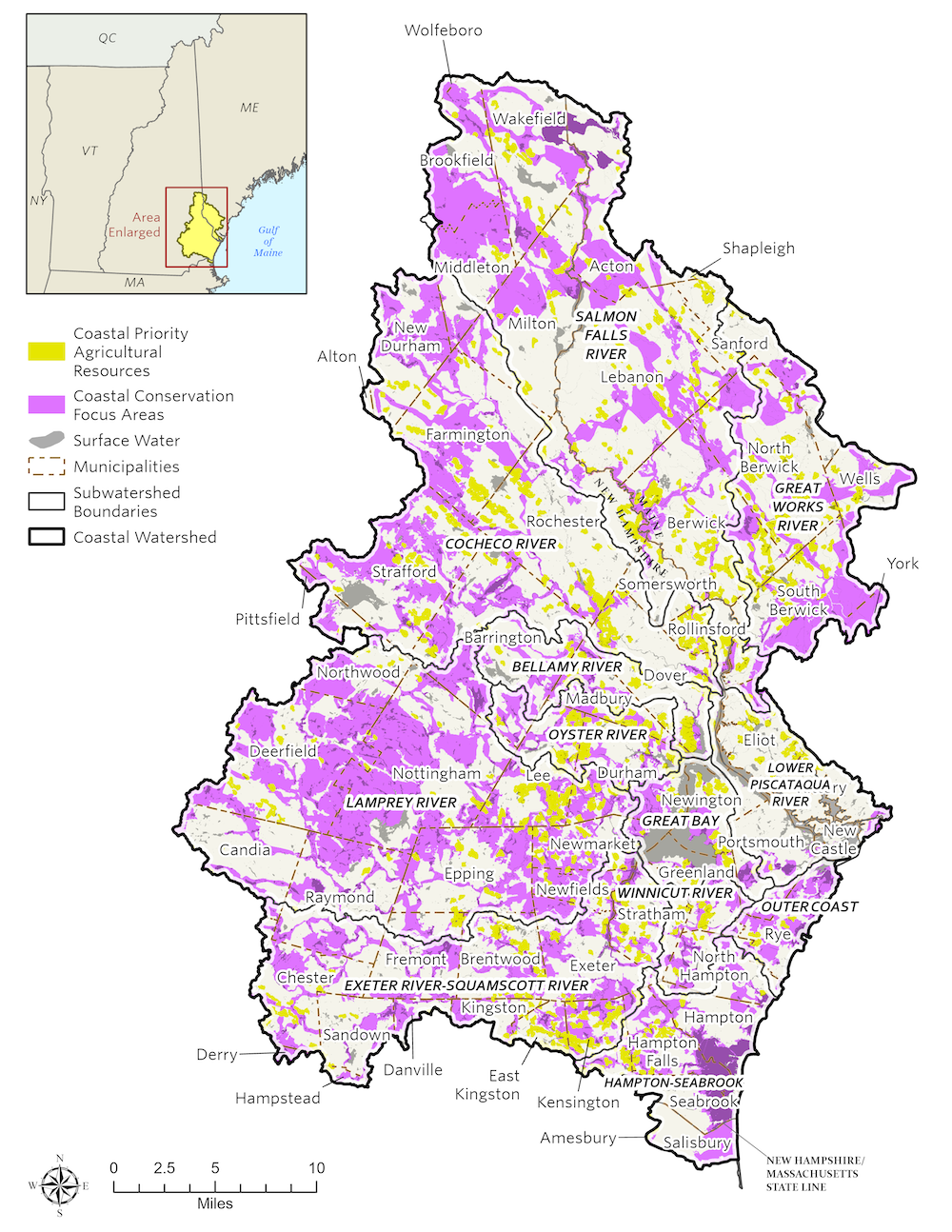Locate & Protect
Photo by Jerry Monkman, courtesy of Southeast Land Trust of New Hampshire
Which lands are the most strategic to protect in your community? What steps can you take to conserve these lands and ensure the many benefits they provide? Below are some tools from the New Hampshire Coastal Watershed Conservation Plan and other resources that you can use to advance your community’s conservation priorities.
Locate
New Hampshire’s Coastal Watershed Conservation Plan has identified priority conservation lands (conservation focus areas) in southeastern New Hampshire and Maine that provide multiple benefits for people, water, and wildlife. If you have a specific objective for your conservation efforts, this website can help you locate or create maps that help you zero in on the lands that will best support your goals. For example, you can create customized maps to identify lands that are especially important for the following:
- Water quality protection: Locate the lands that protect drinking water sources in your community.
- Wildlife habitat: Identify lands that contain habitat blocks and corridors for animals that are important to sustainable hunting and fishing, and ecosystem health.
- Climate resilience: Locate lands that do the most to reduce flooding and mitigate erosion, including for example, those that contain salt marshes and other wetlands.
- Farmland protection: Find the most productive, versatile, and resilient farmlands in your community and surrounding areas.
Conservation focus areas in New Hampshire’s Coastal Watershed (Download the PDF version here)


Photos: John Wallace
Land Use Planning
There are many ways municipalities and land use planning boards can use the Plan and the Conservation Focus Area/Priority Farmlands maps to advance their conservation and community development goals.
Find maps that identify Conservation Focus Areas and Priority Agricultural Resources for your community or subwatershed.
Learn more
- The Innovative Land Use Planning Techniques: A Handbook for Sustainable Development (N.H. Office of Strategic Initiatives)
- Conservation Tools for Wildlife (Taking Action for Wildlife)
- Guides and resources to assist communities with updating and improving master plans (N.H. Office of Strategic Initiatives)
- Natural Resources Inventories: A Guide for New Hampshire Communities and Conservation Groups (UNH Cooperative Extension)
- Buffer Options for the Bay
Protect in Perpetuity
Once you locate priority conservation lands that aren’t permanently conserved, what can be done to protect these special places? Maps from the Plan can help demonstrate their importance and attract funding for protection. Municipalities and conservation organizations can encourage landowners to voluntarily protect their lands through two primary pathways:
- Sale, bargain sale, or donation: If a landowner is willing to transfer ownership and management of their land, they can sell or gift it to a land trust, municipality, or conservation agency. Landowners that donate or sell their land at a reduced price (known as a “bargain sale”) can realize potential income and estate tax advantages.
- Conservation easement: This is a voluntary, but legally binding, agreement between a landowner and a land trust or governmental agency. Easements provide a way for landowners to maintain ownership and continue certain activities (such as forestry or agriculture) but permanently restrict new development or other activities to protect significant conservation values. The easement holder (most often a land trust or governmental agency) agrees to hold and monitor the easement over time.
There are funding sources and conservation organizations that can help guide you through the process of protecting lands, which can be complex legally and financially. Local land trusts are a great place to start to find out what sources of financial assistance may be available (see below.) Consult Conserving Your Land (NH) or Conservation Options (ME), below, to find out more about how it all works.
Confused about conservation terminology? Here are some resources for New Hampshire and Maine.
Learn more:
- Find a Land Trust in New Hampshire
- Find a Land Trust in Maine
- Conserving Your Land: Options for New Hampshire Land Owners (New Hampshire Land Trust Coalition)
- Conservation Options – A Guide for Maine Landowners (Maine Coast Heritage Trust)
- Information for Landowners (Great Bay Resource Protection Partnership)
- Landowner Stewardship Reference Library (Society for the Protection of New Hampshire Forests)



Photos by Jerry Monkman, courtesy of Southeast Land Trust of New Hampshire
FARMLAND
Efforts to nurture a diverse array of farming and local food–related businesses can bring income into farming communities and keep farmland in production. Because it is easily developed, however, farmland is especially vulnerable to development pressure. How can towns and organizations protect farmland, while enjoying the benefits of drinking water, wildlife, local food production, and community well-being? These tools can help sustain these working lands and the farmers who steward them.
LEARN MORE
- Agricultural Conservation Easement Program (United States Department of Agriculture)
- Agricultural Easements (Maine Farmland Trust)
- Food Solutions New England (University of New Hampshire)
- Step-by-Step: How to get assistance from NRCS (Natural Resource Conservation Service)
- Tips for establishing an agricultural commission in your community (New Hampshire Municipal Association)
- Farmland Protection Program (Maine Department of Agriculture, Conservation and Forestry)

